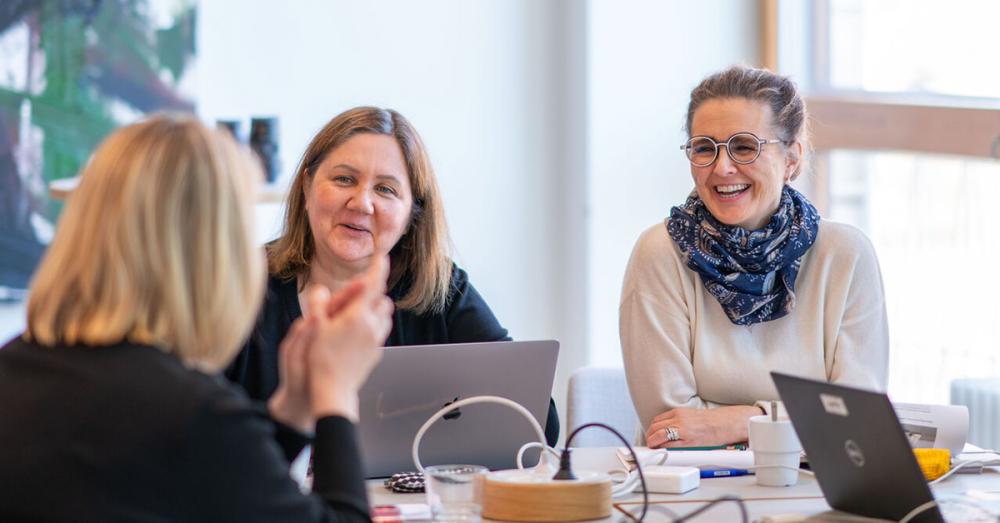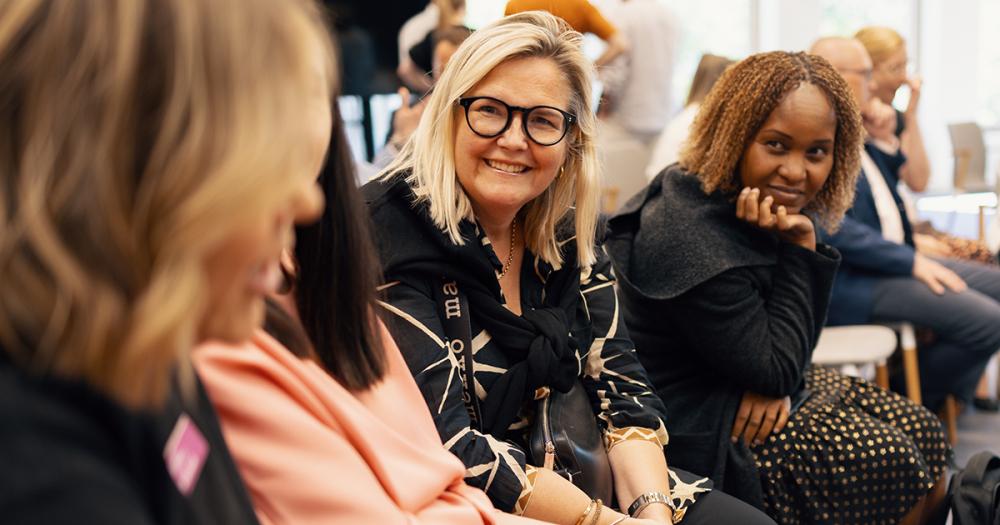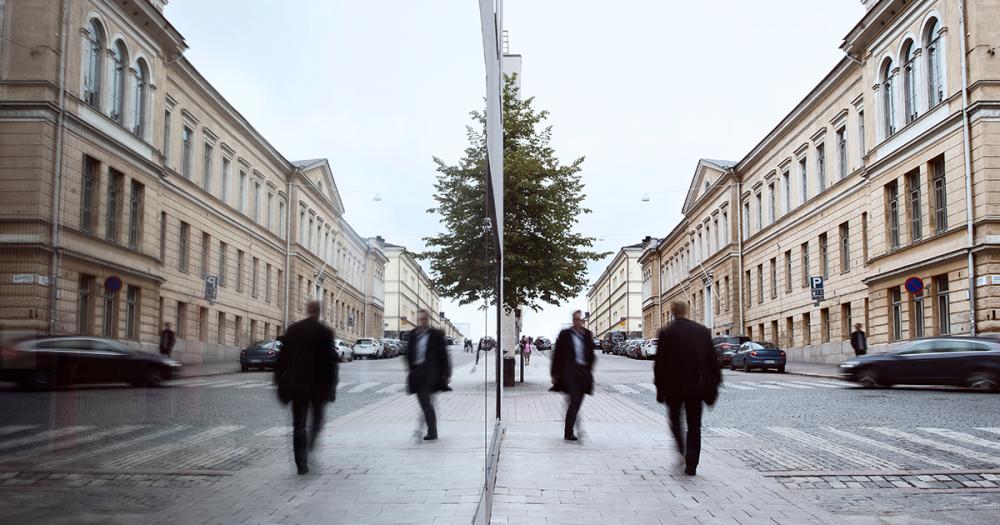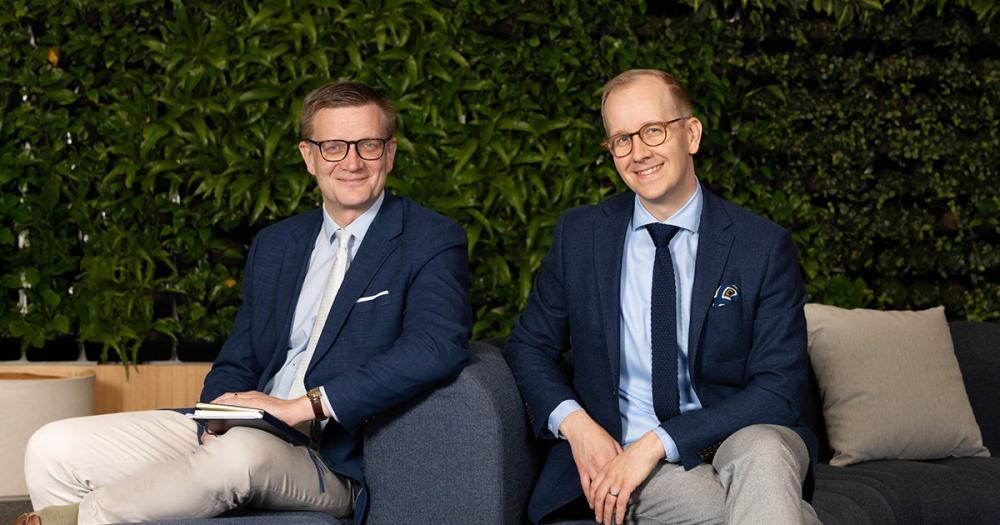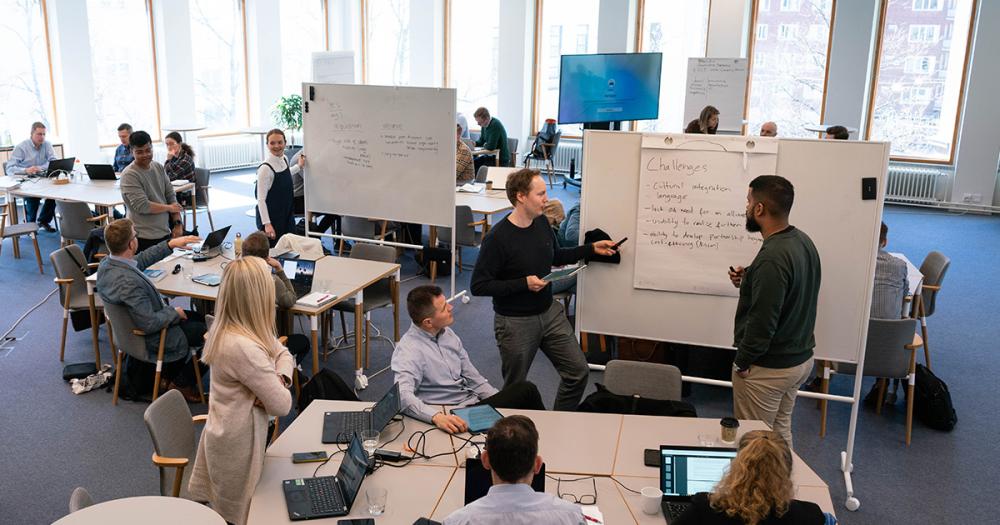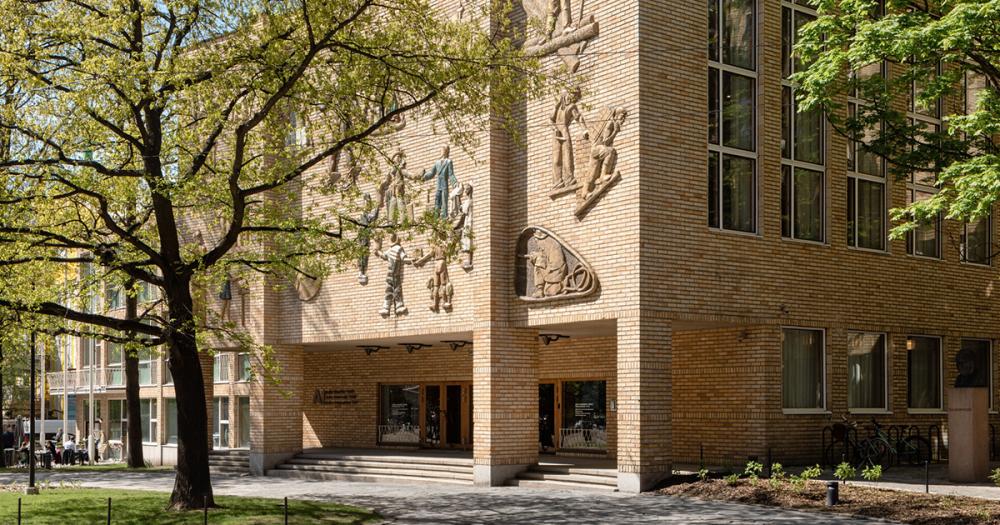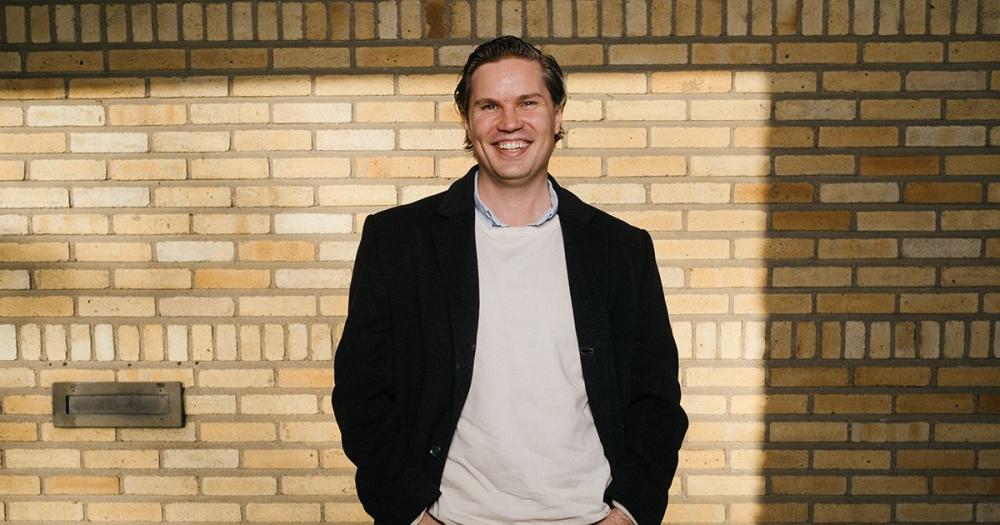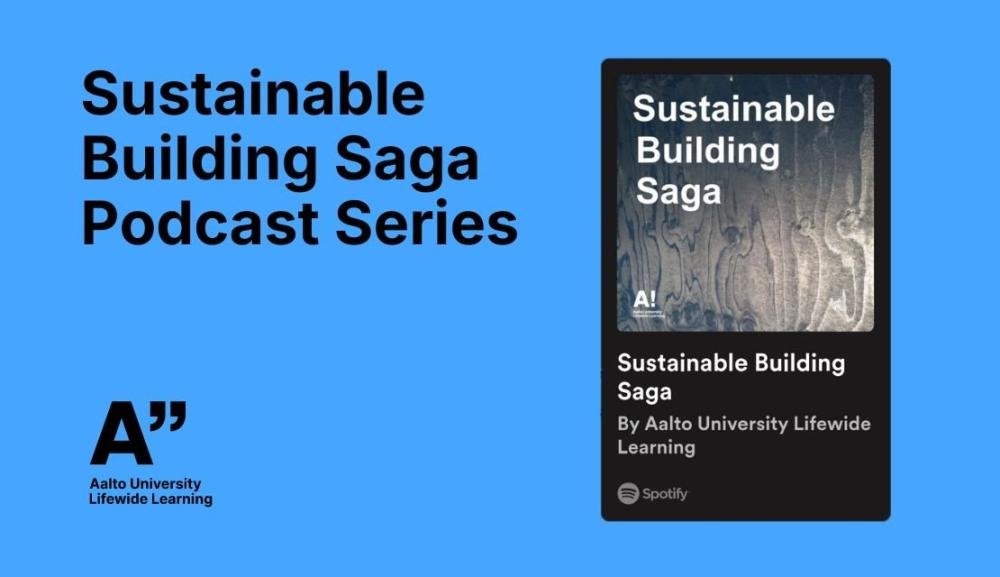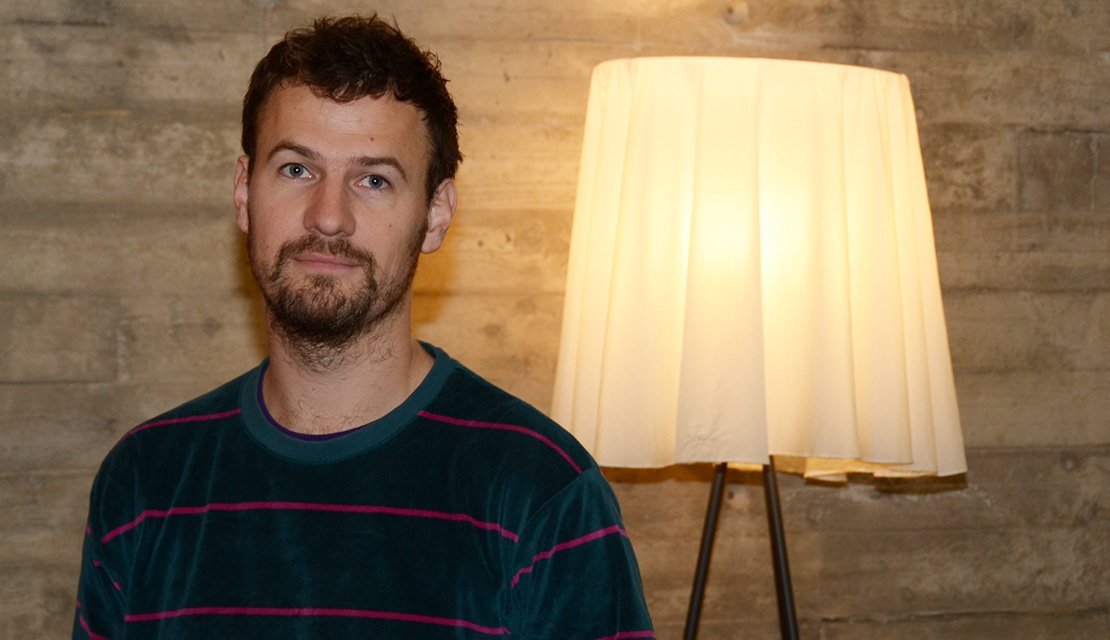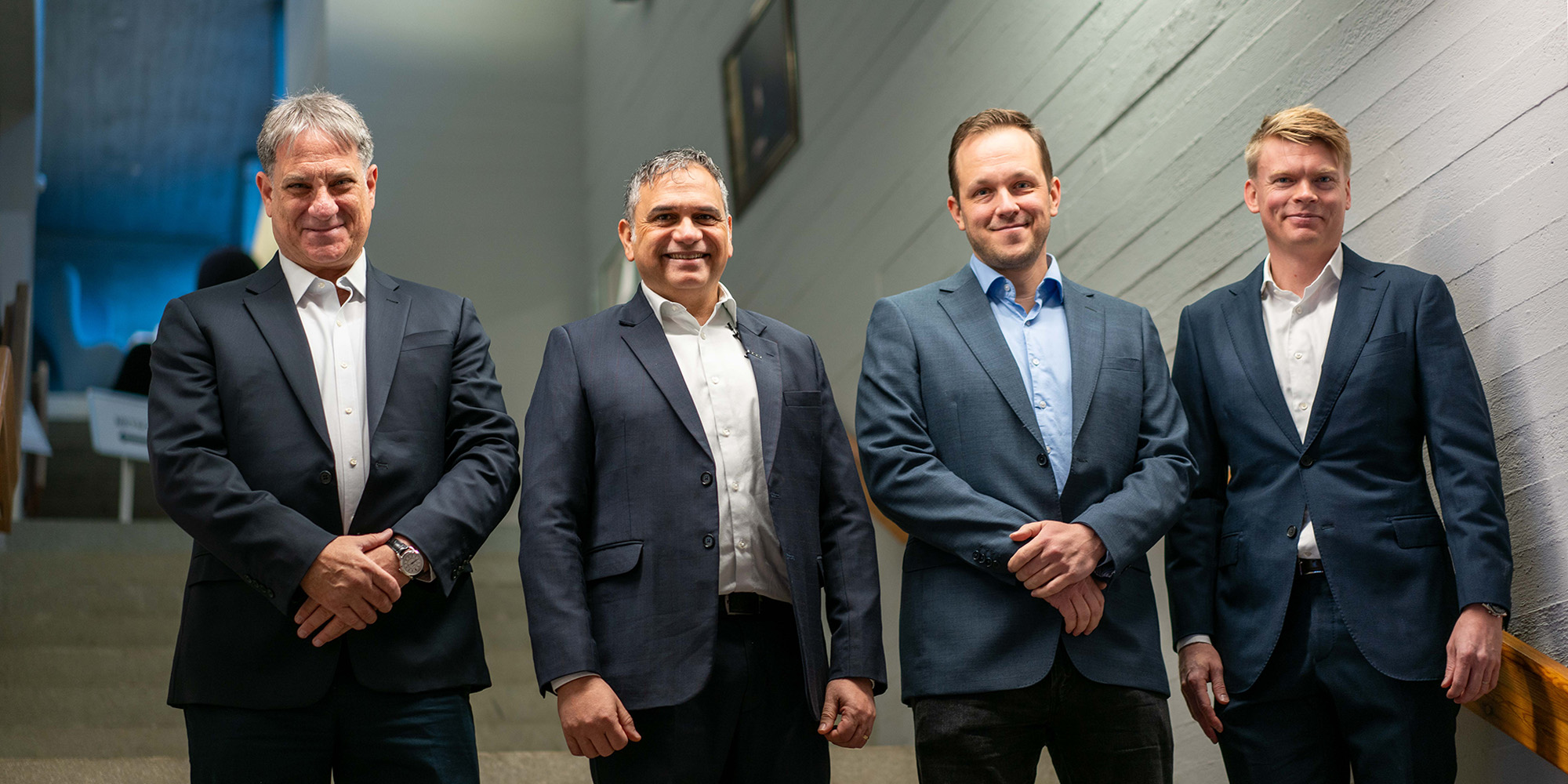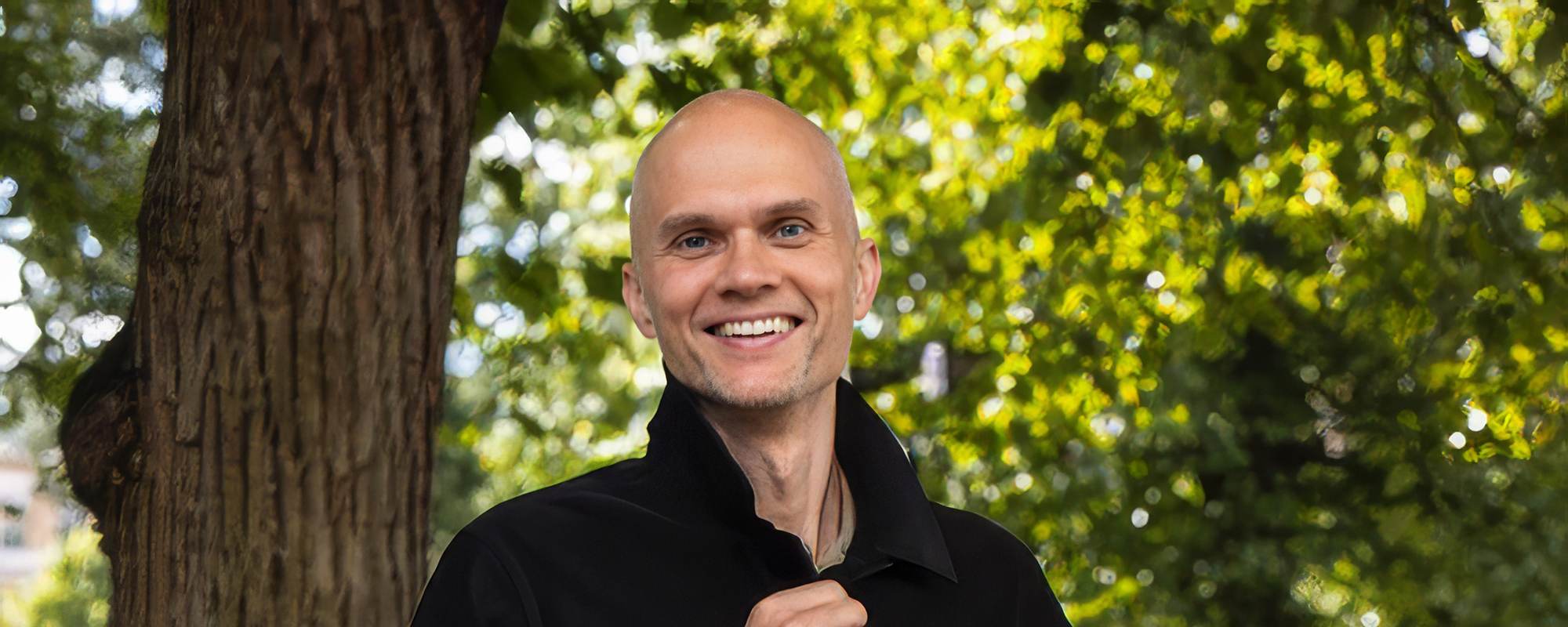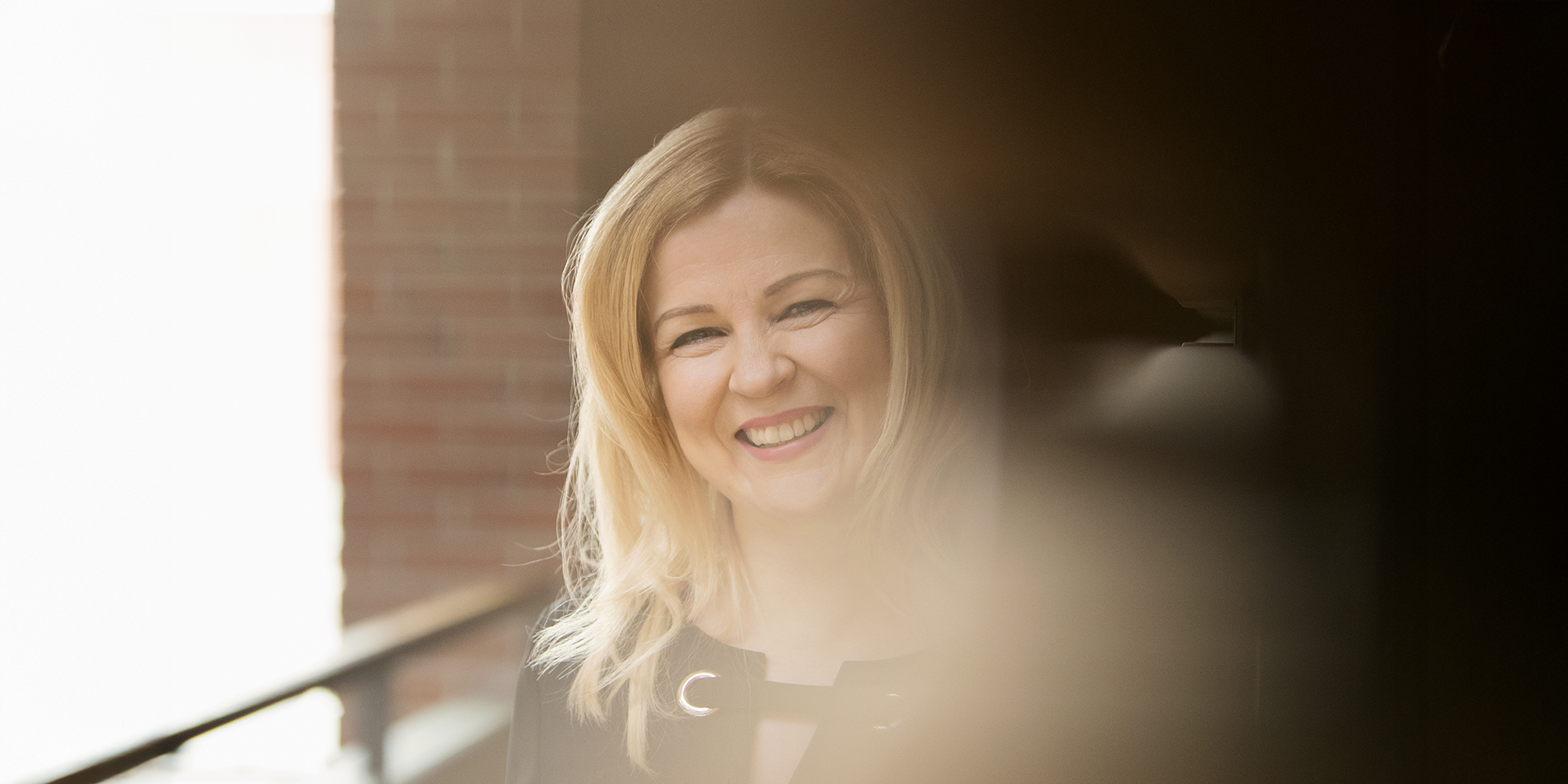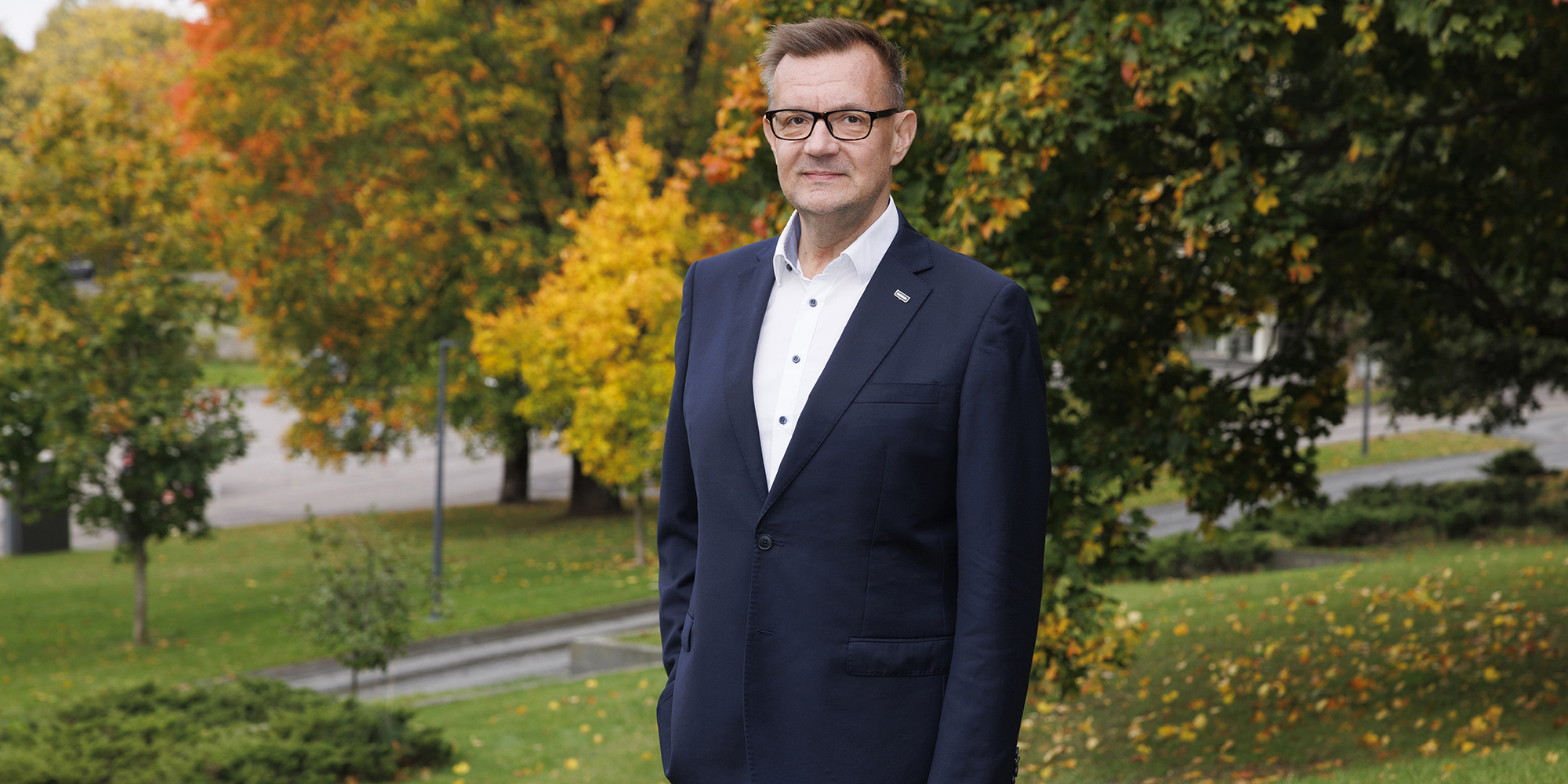“Design fiction is always about the future. It envisions possible futures through design and communicates them via stories,” says Rosenbak.
A peek into the life of a widow in 2035
Rosenbak spoke at an Aalto EE event this autumn, describing how design fiction can help drive innovation and organizational resilience in future disruptions.
As concrete examples of design fiction, Rosenbak showcased work from Future Domestic Landscape, the results of a 10-week project running at Umeå Institute of Design, which he coordinated and taught for several years.
It is important to note that design fiction is not trying to predict the future."
One of the most memorable examples Rosenbak shared was a short film created by one of his former students, Kevin Gaunt. The film told a tale of the domestic life of an elderly widow some 20 years from now.
In the future portrayed, the widow has various bots to help her out with her everyday life – and also a bot programmed to remind her of her late husband. From time to time, ‘Tom-bot’ plays her husband’s favorite music a bit too loud, just as he used to do. The bot also orders his favorite cookies from the shop.
Rosenbak observed that while the individual bots presented in the film are very simple, collectively they might offer a ‘smarter’ or more meaningful life for the widow than for example a super intelligent Alexa, Siri or Cortana.
“It is important to note that design fiction is not trying to predict the future. The video is not claiming that this is what a widow’s life will be like in 20 years. Rather, the aim is to explore futures through so called diegetic prototypes,” Rosenbak emphasizes
"Diegetic prototypes are basically prototypes convincingly embedded in future worlds, making the future come alive to us through supposedly real products or services,” he adds.
Roots in service design and storytelling
Rosenbak got his Ph.D. in industrial design from Umeå Institute of Design, a part of Umeå University, in January 2019.
Since then he has divided his time between teaching, research, and consulting in design, spending the main part of last spring doing design fiction consulting for Laerdal Medical, a world leading provider of educational and therapy products for lifesaving and emergency medical care. In November 2019, Rosenbak joined the Copenhagen office of Laerdal as Design Lead on one of the company’s products, vSim for Nursing, a virtual simulator that helps nursing students across the world prepare for clinical practice.
Design fiction is creative provocation: it facilitates both exploring and critiquing possible futures."
Rosenbak emphasizes that design fiction is creative provocation: it facilitates both exploring and critiquing possible futures. The discipline’s roots lie in both service design and storytelling.
He reminds that some of the futures imagined by design fiction may be uncomfortable – but unpleasant visions can be highly valuable when planning an organization’s next steps.
“Indeed, failing to dare to engage in this essential vision work can leave organizations unprepared for waves of future disruptions, which might bring about entirely different levels of unpleasantness,” he notes.
Science fiction and design fiction have much in common
Rosenbak remarks that science fiction and design fiction have a great deal of similarities. The movie Minority Report from 2002 is a classic example. The futuristic touchscreen technology presented in the film opened the general public’s eyes to what touch technology was all about.
Design fiction professionals always base their work on design and research."
“The incredible interface that Tom Cruise controlled with data gloves was a fantasy at the time. But it was so realistic that fortune 500 companies started calling up the designer, John Underkoffler, asking for similar technology in real life. He took on the challenge, and created a product called Mezzanine,” Rosenbak says.
The line between science fiction and design fiction is fuzzy. Microsoft has hired science fiction writers to create visionary stories exploring for example quantum computing, real-time translation, and machine learning. The tech giant is not alone: companies such as Visa, Ford and PepsiCo have also followed suit.
While Rosenbak sees a great deal of kinship between science fiction and design fiction, he reminds, however, that design fiction professionals always base their work on design and research – and showcase their ideas in many different forms such as films, games, and digital or physical prototypes of future products and services.
Questions are central
In design fiction, the designer’s main focus is not creating answers, but rather formulating great questions. The ‘unknown unknowns’ are a key concept in the discipline.
“We are very comfortable asking very large ‘What if?’ questions in our field. We always offer a designer’s perspective on possible answers,” Rosenbak points out.
“We build future prototypes and stories around them. This allows organizations and customers to concretely see how they could interact with the products – and ideally also give their own opinion on the story presented,” he adds.
Continuous work would be more fruitful
Currently, most design fiction is project based. Companies hire design fiction professionals to help them contemplate possibilities and threats posed by new technology such as virtual reality.
Long-term design fiction is still a rarity, which is a pity."
In the future, Rosenbak would like to see more lasting work: organizations hiring design fiction professionals with an explicit mandate to continuously envision the future and challenge the direction in which the organization could and perhaps should be going.
”Long-term design fiction is still a rarity, which is a pity. In-depth understanding of an organization enriches design fiction. When you are thoroughly familiar with an organizations’ services, products, customer profiles, and value proposition, it is easier to visualize a myriad of possible futures – and also easier to engage customers in the process,” he ponders.
The Service Design program provides a comprehensive view of service design as a user-driven approach to service development. It runs through the various planning stages of service design and the methods appropriate to them. After the program, participants will understand how service design is connected to business goals and be able to describe a service production model. The program is held in Finnish. Read more about the program.
The Design Thinking for Business Innovation program combines business models with the skills needed in designing new solutions that create value for the customer and your business providing effective tools for corporate innovation and transformation. Read more about the program.
If you want to hear more about Design Fiction, watch our 'Design Thinking and Beyond' webinar recording, in which Søren Rosenbak shares his insights. Learn more.

